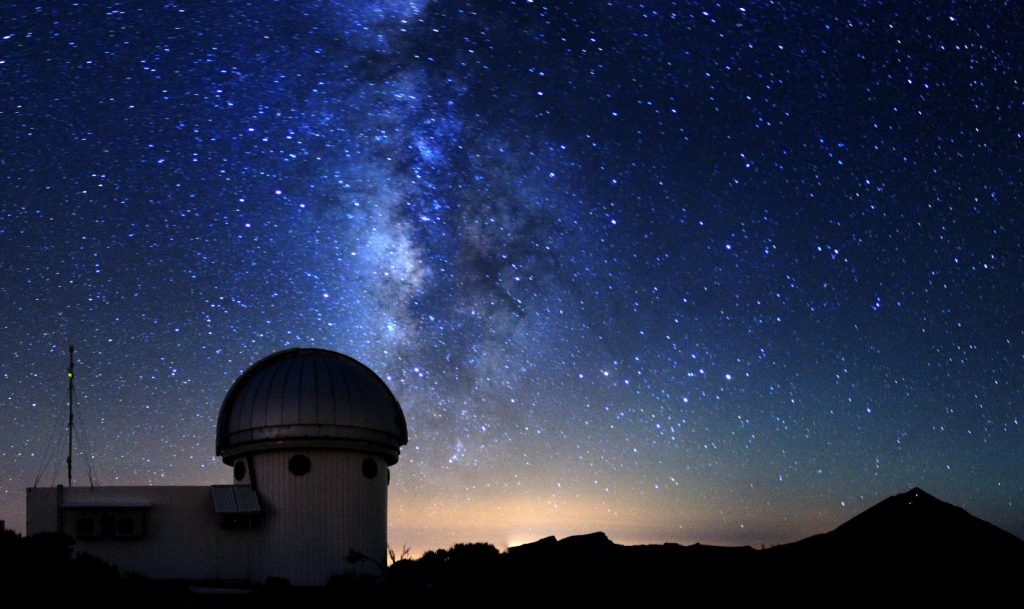SONG project led by SAC examines possible exoplanet and expands with two new telescopes
The Stellar Astrophysics Centre (SAC), a basic research center, is in charge of the Danish-led project Stellar Observations Network Group (SONG) that just finished an examination of a possible exoplanet, recently discovered by NASA’s newest space telescope TESS. At the same time, the SAC-led telescope network SONG has expanded, adding two new telescopes in Queensland, Australia.

Researchers from the DNRF Center of Excellence SAC are leading the telescope network SONG, which recently finished an examination of a possible exoplanet, newly discovered by NASA’s recent planet hunter, the space telescope TESS. SONG is already a well-established project, producing precise measurements from telescope data, and the project will soon be strengthened even further, when the Danish project expands by adding two new telescopes at the Mt. Kent Observatory in Queensland, Australia.
The SONG project is a collaboration between Aarhus University and the University of Copenhagen. The aim is to create a network of telescopes placed strategically around the Earth. The network’s first telescope was inaugurated on Tenerife in 2014 in collaboration with Instituto de Astrofísica de Canarias, and was primarily financed by the DNRF, the Villum Foundation, and the Carlsberg Foundation. The SONG network was later expanded further when the National Astronomical Observatories of China joined the project and later initiated the building of the second SONG telescope on the Tibetan plateau in China.
SONG assists NASA’s planet hunter in the search for new exoplanets
In April last year, NASA launched its new planet hunter TESS to find so-called exoplanets, which are planets circling around stars other than the sun. New observations from TESS point to a discovery of the first exoplanets, but to avoid misinterpretations of the measurements, all newly discovered potential exoplanets will be examined further by other telescopes. This is where SONG comes into the picture. With the help of telescopes from SONG, the Danish researchers will confirm whether the objects discovered are indeed exoplanets. By measuring the movement of the star that the exoplanet circles around, the researchers from SONG can confirm the existence of the planet as well as gather important information about the planet’s properties, including its surface temperature and mass index.
“It is great that we, in Denmark, can use one of our own telescopes to confirm the exoplanet candidates that NASA’s TESS satellite is finding. Our SONG telescope is actually one of the only ones in the world that can deliver the precision needed in order to confirm that we have found an exoplanet,” said Ph.D. student at SAC Emil Knudstrup, who is deeply involved in identifying and examining possible exoplanets with the help of SONG telescopes.
“The past four years have shown that the SONG telescope at Tenerife is a fantastically efficient instrument and they have also shown, by the way, that we were able to start detailed observations with very short notice of the newly discovered and possible exoplanet. At the same time, SONG complements the work of the Aarhus group, who are working with results from TESS and where we are busy using “stellar oscillations” observed by TESS for that star the planet is circling around, to determine the properties of the stars. We have established a data center, TASOC, which is responsible for an important part of the analysis of data from TESS and from Aarhus University. We are leading a big international collaboration about the exploitation of these data,” said professor and head of center at SAC, Jørgen Christensen-Dalsgaard, who is the leader of SONG.
Read more about the TESS telescope collaboration with SAC here
SONG expands with two new telescopes
The SONG project’s most recent partners are the five Australian universities: the University of Southern Queensland, the University of Sydney, the University of New South Wales, Monash University, and Australian National University. These institutions will build the network’s third observatory. In order to observing individual stars over long periods of time and through local shifts between day and night, it is important to create a network of telescopes distributed all over the globe.
“The Tenerife telescope works really well and automatically observes every night, when allowed by the local weather. We want to transfer this automation, which both reduces costs and increases efficiency, to the new observatory in Australia. It will be a great task, but we look forward to begin working on it,” explained SONG manager Mads Fredslund Andersen, who is part of the scientific staff at SAC.
With a grant from the Australian Research Council, the five Australian universities will collaborate with the Department of Physics and Astronomy at Aarhus University and the Carlsberg Foundation to finance the new SONG observatory. The observatory will consist of two separate telescopes, each with a main mirror of 70 centimeters in diameter, as well as a so-called spectrograph – an instrument that collects the light from each of the telescopes.
“We have already begun building the new spectrograph in our laboratory at Aarhus University. The design is slightly different from what we have in Tenerife, as we now have to combine the light from two slightly smaller telescopes, which we will solve with the use of optical fibers. It is exciting to, once again, develop an instrument that can deliver measurements with the high quality we want. Fortunately, we can reuse much of the knowledge gained from the first telescope project at Tenerife,” said associate professor at SAC and scientific leader of SONG, Frank Grundahl.
